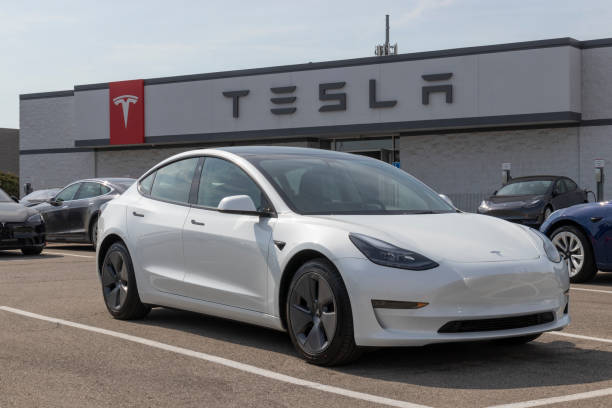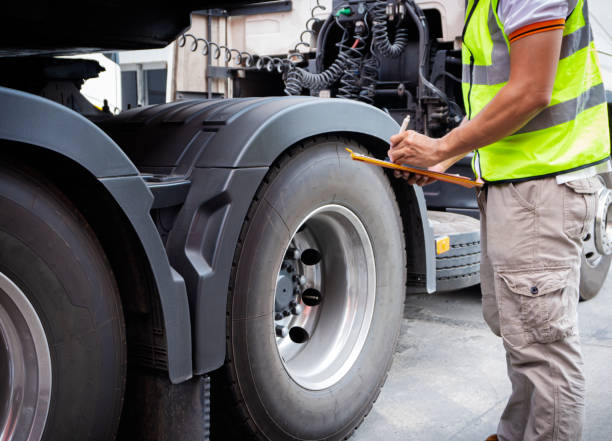If you’re a Tesla owner, you probably already know that electric vehicles (EVs) require less maintenance than traditional petrol-powered cars. No oil changes, no exhaust systems, and fewer moving parts overall. But like any vehicle, things can still wear out or break over time.
So, what parts are most commonly replaced on Teslas? And more importantly, how can you fix them? Whether you’re a seasoned Tesla owner or considering one for the first time, it’s good to be prepared. Let’s explore what you might need to replace in your Tesla and how to tackle it.
Contents
1. Tyres
Even though Tesla vehicles have regenerative braking, which reduces wear and tear on the brakes, tyres remain one of the most frequently replaced Tesla car parts. Teslas are known for their quick acceleration, which can put extra strain on the tyres. Additionally, many owners opt for higher performance tyres, which may wear out faster than standard ones.
How to Fix:
Replacing your tyres isn’t much different from a conventional car. The key is making sure you’re using the right ones. For most Tesla models, Tesla recommends all-season radial tyres, but if you’re in a region with harsh winters, winter tyres could be a better fit. Make sure your tyres are rotated regularly, and your wheel alignment is spot-on to extend tyre life.
2. 12-Volt Battery
While Teslas are fully electric, they still rely on a 12-volt battery for functions like operating lights, locks, and infotainment systems. Over time, this battery can degrade, just like in any other car. If it fails, you might experience warning lights or even trouble starting your vehicle.
How to Fix:
Replacing the 12-volt battery in a Tesla is straightforward. The battery is located under the front hood (in the “frunk”). You can access it by removing the plastic cover over the frunk storage area. Disconnect the negative terminal first, then the positive. Swap in the new battery and reconnect the terminals in reverse order—positive first, then negative. Always ensure the replacement battery is compatible with your Tesla model.
3. Brakes
Even though regenerative braking takes a lot of the load off traditional brakes, Tesla’s brake pads and rotors can still wear out over time. You may not need to replace them as frequently as you would in a conventional vehicle, but they do need periodic attention, especially if you’re driving in areas with steep hills or if you drive aggressively.
How to Fix:
Brake pad and rotor replacements are tasks best left to professionals unless you’re a seasoned DIY mechanic. A mechanic can inspect your brake system and determine if the pads or rotors need replacing. If you’re going to do it yourself, just be aware that the electric systems in Tesla cars add a layer of complexity that’s not present in traditional vehicles. Always follow Tesla’s service recommendations for brake maintenance.
4. Door Handles
If you’ve owned a Tesla for a while, especially an older Model S, you’ve probably run into issues with the door handles. The early Model S featured retractable door handles that were prone to mechanical failure. They either stopped extending or retracted awkwardly, making it difficult to open the door.
How to Fix:
Tesla has updated the design of the door handles over time, but if yours are still faulty, a replacement might be needed. You can order a new door handle from Tesla, but installing it can be a bit tricky. If you’re not comfortable with minor disassembly of your vehicle’s door, it might be worth having Tesla or a certified technician handle the replacement.
5. Suspension Components
The suspension system in Teslas, particularly in the Model S and Model X, has been known to experience wear, especially in high-mileage cars. Commonly replaced suspension parts include control arms and ball joints. If you notice a knocking sound while driving or feel a rougher ride than usual, it might be a sign that the suspension needs attention.
How to Fix:
Fixing the suspension can be a complicated task, and it often requires special tools. It’s possible to replace control arms and ball joints yourself if you’re experienced with suspension work, but for most people, this is another job best left to a mechanic. If you’re under Tesla’s warranty or have a service plan, it might even be covered.
Bonus Tip: Keep Software Updated
This one isn’t a physical part, but keeping your Tesla’s software up to date is crucial. Tesla regularly rolls out updates that can improve everything from autopilot features to battery efficiency. These updates also sometimes include fixes for bugs and glitches that may affect the performance of your vehicle.
To ensure your Tesla stays in peak condition, always install software updates as soon as they’re available. If you ignore updates, you might miss out on vital improvements that could prevent unnecessary wear on certain parts.
Final Thoughts
Owning a Tesla comes with many perks, like reduced maintenance compared to traditional vehicles. However, like any car, certain parts will wear out and need replacing. Keeping an eye on the tyres, 12-volt battery, brakes, door handles, and suspension components will help ensure your Tesla stays in top shape.


